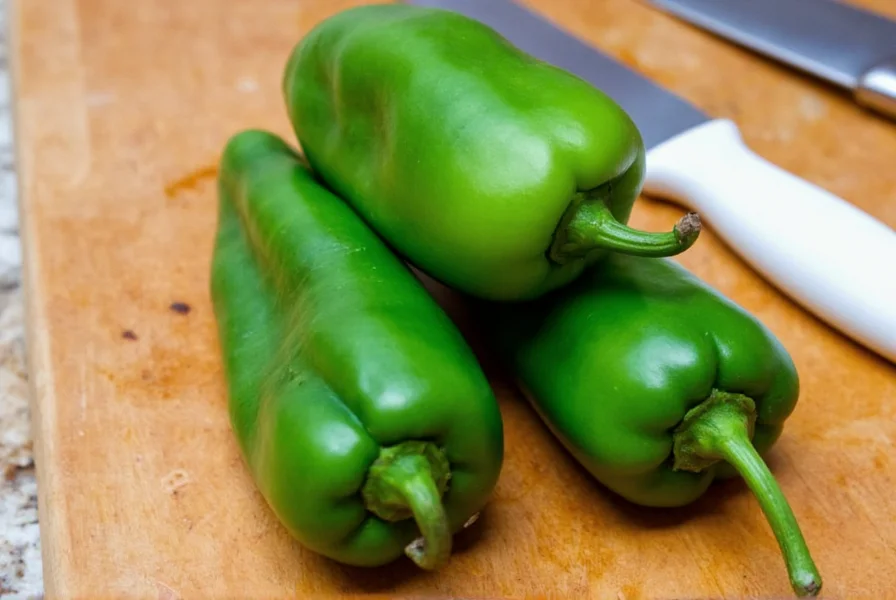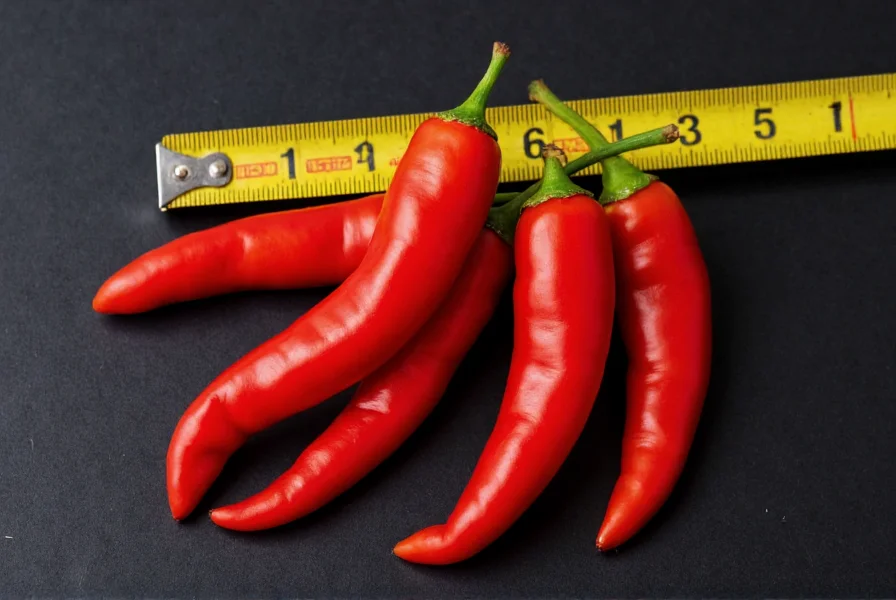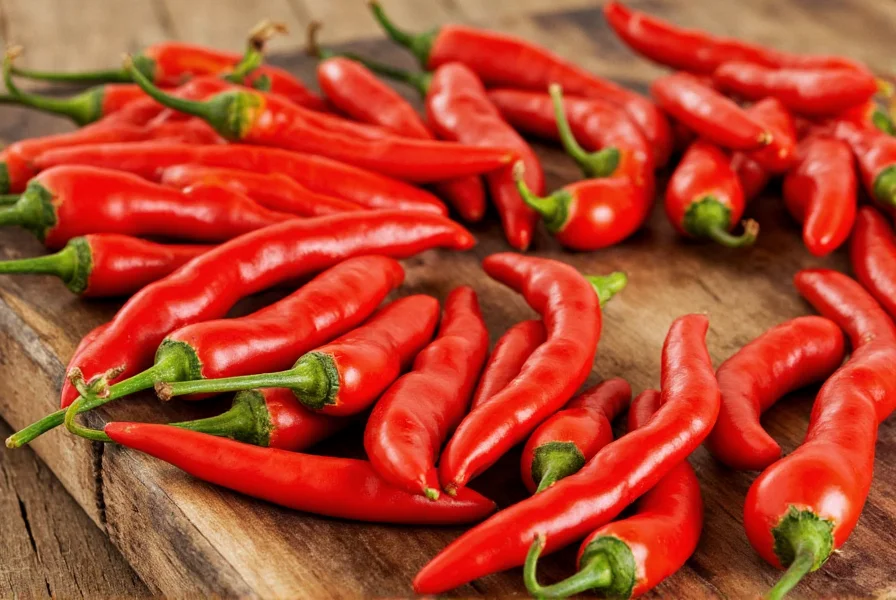Chili peppers, members of the Capsicum genus, provide culinary diversity through their varying heat levels, flavors, and colors. Understanding different types of chili helps home cooks and professional chefs select the right pepper for specific dishes while managing heat expectations. This comprehensive guide explores common and specialty chili varieties, their Scoville heat units (SHU), flavor profiles, and ideal culinary applications.
Understanding Chili Classification Systems
Chili peppers can be categorized by several factors including heat level, botanical classification, geographical origin, and culinary usage. The most practical system for cooks is the Scoville scale, which measures capsaicin concentration—the compound responsible for heat. However, flavor characteristics like sweetness, fruitiness, smokiness, and earthiness also significantly impact a chili's culinary value beyond mere heat measurement.
Mild Chili Varieties (0-5,000 SHU)
Mild chilies serve as flavor enhancers without overwhelming heat, making them versatile for various dishes.
Bell Peppers (0 SHU)
Available in multiple colors (green, red, yellow, orange), bell peppers contain no capsaicin. Green bells offer grassy notes while ripe colors develop sweetness. Ideal for stuffing, salads, stir-fries, and as colorful garnishes.
Poblano Peppers (1,000-2,000 SHU)
Large, dark green peppers with rich, earthy flavor. When dried, they become ancho peppers. Perfect for chiles rellenos, mole sauces, and roasted pepper dishes. 
Pepperoncini (100-500 SHU)
Often confused with banana peppers, these light green peppers offer gentle tanginess. Commonly pickled and served as antipasti or on Greek salads.
Medium Heat Chili Varieties (5,000-30,000 SHU)
Jalapeño Peppers (2,500-8,000 SHU)
The most widely recognized medium-heat chili, jalapeños provide bright, grassy flavor with moderate heat. When smoked and dried, they become chipotle peppers. Essential for salsas, guacamole, nachos, and pickled preparations. Regional variations include the slightly milder senorita and hotter munot cultivars.
Serrano Peppers (10,000-23,000 SHU)
Smaller and significantly hotter than jalapeños, serranos offer crisp, clean heat. Common in pico de gallo, hot sauces, and as a garnish for Mexican dishes. Their thin walls make them ideal for quick pickling.
Fresno Peppers (2,500-10,000 SHU)
Resembling smaller red jalapeños, fresnos develop fruitier notes as they ripen from green to red. Excellent for sauces, relishes, and adding color to dishes without excessive heat.
Hot Chili Varieties (30,000-100,000 SHU)
Habanero Peppers (100,000-350,000 SHU)
Recognizable by their lantern shape and tropical fruit aroma, habaneros deliver intense heat with citrusy undertones. Available in orange, red, and chocolate varieties, each offering slightly different flavor profiles. Essential for Caribbean and Yucatecan cuisine, particularly in hot sauces and marinades.
Scotch Bonnet Peppers (100,000-350,000 SHU)
Similar to habaneros but with a distinctive bonnet shape, these chilies form the backbone of Jamaican jerk seasoning and other Caribbean dishes. Their fruity, floral notes complement tropical flavors exceptionally well.
Thai Bird's Eye Chili (50,000-100,000 SHU)
Small but potent, these chilies feature in Southeast Asian cuisines. Available in red and green varieties, they provide clean, sharp heat perfect for curries, stir-fries, and dipping sauces.
Extreme Heat Chili Varieties (100,000+ SHU)
Ghost Pepper (Bhut Jolokia) (800,000-1,041,427 SHU)
Originating in Northeast India, this chili held the Guinness World Record for hottest pepper. Its heat builds slowly but lasts significantly longer than milder varieties. Used sparingly in sauces, chutneys, and experimental cooking.
Carolina Reaper (1,400,000-2,200,000 SHU)
Currently recognized as the world's hottest chili, the Carolina Reaper features a distinctive red, bumpy appearance with a small tail. Developed through selective breeding, it delivers intense heat followed by sweet, fruity notes.  Only recommended for experienced users in minute quantities for extreme hot sauces.
Only recommended for experienced users in minute quantities for extreme hot sauces.
| Chili Variety | Scoville Heat Units | Flavor Profile | Common Culinary Uses |
|---|---|---|---|
| Bell Pepper | 0 SHU | Sweet, grassy (green), fruity (colored) | Stuffing, salads, stir-fries |
| Poblano | 1,000-2,000 SHU | Earthy, mild heat | Chiles rellenos, mole sauces |
| Jalapeño | 2,500-8,000 SHU | Grassy, bright | Salsas, nachos, pickled preparations |
| Habanero | 100,000-350,000 SHU | Fruity, citrusy | Caribbean sauces, marinades |
| Carolina Reaper | 1.4-2.2 million SHU | Sweet, fruity, floral | Extreme hot sauces (use sparingly) |
Culinary Applications of Different Chili Types
Selecting the right chili depends on both desired heat level and flavor compatibility. Mild chilies like poblanos work well in dishes where pepper flavor should shine without overwhelming heat, such as stuffed peppers or cream-based sauces. Medium-heat varieties like jalapeños provide noticeable warmth while maintaining versatility across cuisines.
Hotter chilies require more careful handling—habaneros and Scotch bonnets excel in fruit-based salsas where their tropical notes complement mango or pineapple. For authentic Thai cuisine, bird's eye chilies provide the characteristic sharp heat that defines many dishes.
When working with extremely hot varieties like ghost peppers or Carolina Reapers, always use gloves and avoid touching your face. These chilies should be used in minute quantities—often just a small piece can flavor an entire batch of sauce.
Growing Different Chili Varieties
Many chili types grow well in home gardens with proper conditions. Most require 6-8 hours of direct sunlight, well-draining soil, and consistent watering. Starting seeds indoors 8-10 weeks before the last frost gives plants sufficient time to mature.
Milder varieties like bell peppers and poblanos generally have shorter growing seasons (60-80 days), while hotter varieties like habaneros and ghost peppers require longer (90-120 days). Container gardening works well for most chili types, making them accessible even for urban gardeners with limited space.
Safety Considerations When Handling Hot Chilies
When preparing extremely hot chilies, always wear disposable gloves to prevent capsaicin transfer to sensitive areas. Work in a well-ventilated area, as capsaicin vapors can irritate eyes and respiratory passages. Never use plastic bags for storage—airtight glass containers prevent accidental exposure.
If capsaicin contacts skin, wash immediately with soap and cold water (hot water opens pores, increasing absorption). For eye exposure, flush with milk or a specialized capsaicin removal solution rather than water, which spreads the oil.











 浙公网安备
33010002000092号
浙公网安备
33010002000092号 浙B2-20120091-4
浙B2-20120091-4